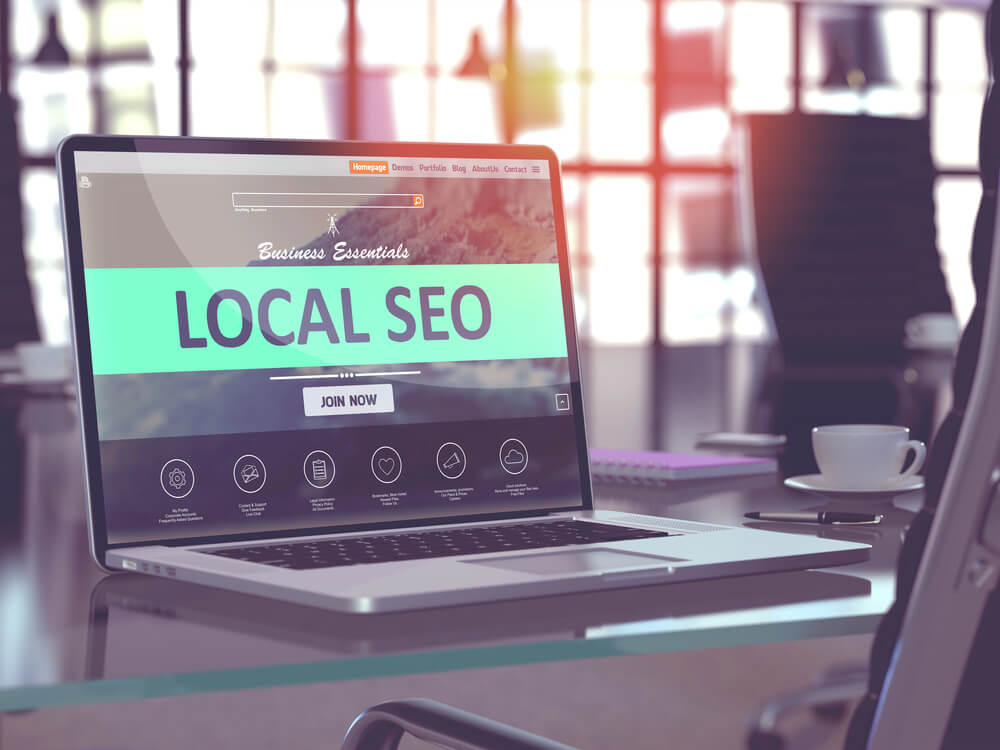Top 7 PPC Tips to Drive Local Traffic and Boost Conversions
If you’ve struggled to generate local leads through PPC advertising, you’re not alone. While many businesses focus on casting a wide net, the real magic happens when you zero in on your immediate service area with laser-focused precision. Whether you’re running a brick-and-mortar store or providing services to a specific region, mastering local PPC can transform your digital marketing results. From smart geographic targeting to conversion-optimised landing pages, these seven proven strategies will help you capture more qualified local leads without wasting your advertising budget.
Key Takeaways
- Implement radius targeting with location-specific bid adjustments, starting with smaller radiuses (1-5 miles) in urban areas and expanding based on performance.
- Create location-specific landing pages with consistent NAP information, embedded Google Maps, and mobile optimisation for better local conversions.
- Use location extensions and call extensions in ads to showcase business addresses and enable direct customer contact.
- Target long-tail local keywords with lower competition and incorporate location-specific terms in ad copy for higher engagement.
- Monitor geographic performance metrics weekly and adjust budgets based on local conversion rates and cost-per-click data.
Master Your Geographic Targeting Strategy
While many advertisers focus solely on keywords and bid strategies, mastering your geographic targeting can dramatically improve your PPC campaign’s effectiveness. By leveraging modern geotargeting tools, you’ll connect with customers who are most likely to convert based on their location, saving your precious ad budget in the process. This personalised approach typically results in lower competition for location-specific keywords.
Start by identifying your high-value locations through careful market research. You’ll want to use audience segmentation to understand where your best customers are concentrated, then adjust your targeting accordingly. It’s also crucial to optimise your Google Business Profile(https://support.google.com/business/answer/2911778?hl=en) for better local search visibility, which can be a game-changer for attracting the local customers.
Remember, you can exclude areas that aren’t relevant to your business – there’s no point advertising winter coats in tropical locations!
To maximise your results, combine radius targeting with local customisation. If you’re a brick-and-mortar business, set up campaigns that target people within specific distances from your location. The growing investment in this strategy is evident, with mobile geotargeting spending projected to reach nearly $39 billion.
Don’t forget to tailor your ad copy to reference local landmarks, events, or cultural touchpoints – this personal touch can boost engagement by up to 84%!
For best results, regularly monitor your geographic performance metrics and adjust your targeting as needed. You might discover some surprising hotspots where your ads perform exceptionally well.
Optimise Local Keywords and Content
Building on your precise geographic targeting, the next step is to master your local keyword strategy and content optimisation. Start by conducting thorough keyword research using Google’s Keyword Planner, focusing on search intent and local dialects that resonate with your target audience.
You’ll want to identify long-tail keywords that have lower competition but higher conversion potential. Implement smart keyword clustering by organising your findings into tightly themed ad groups, and don’t forget to take into account seasonal trends that might affect your local market. Optimising for high-intent search terms will maximise your conversion opportunities.
Your competitor analysis will help you spot gaps in the market that you can target with specific local phrases. Remember to segment your audience based on different locations and zip codes – this’ll help you create more relevant, targeted content. Creating Single Keyword Ad Groups can significantly improve your ad relevance and click-through rates.
When crafting your ad copy, incorporate location-specific terms and references that locals will recognise. Use location extensions and call extensions to make it easy for customers to reach you. SEO also plays a crucial role in enhancing local visibility, so consider investing in a solid SEO strategy for long-term benefits and sustainable results.
Keep testing different keyword match types and monitor your performance data – what works in one local market mightn’t work in another!
Create Location-Specific Landing Pages
According to leading PPC experts, location-specific landing pages serve as your most powerful conversion tools in local advertising campaigns. When you’re investing in PPC ads, you’ll want to guarantee your local design matches your audience’s expectations and delivers a seamless user experience.
Start by maintaining consistent NAP (Name, Address, Phone) information across all your landing pages. Regular monitoring of citation consistency across online directories is crucial for maintaining strong local visibility. You’ll boost credibility by embedding Google Maps and including geotagged images that showcase your physical location. With 46% of Google searches being local, optimising these pages is essential for capturing nearby customers.
Don’t forget to implement schema markup – it’s like giving search engines a cheat sheet about your business!
Make your landing pages work harder by incorporating location-specific elements that resonate with local customers. Add testimonials from nearby clients, highlight community involvement, and showcase relevant certifications. A well-optimised Google Business Profile can also aid in enhancing local visibility and attracting customers quickly.
Remember to keep your pages mobile-friendly, as most local searches happen on smartphones. Additionally, ensuring your Google Business Profile is properly set up can help your business stand out among local competitors.
To maximise conversions, create clear calls-to-action that speak directly to local customers. Whether it’s “Book Your Downtown Seattle Appointment” or “Get a Free Quote in Miami,” make it easy for visitors to take the next step.
Keep your content fresh and updated – search engines (and customers) love that! Regular updates to your website and business profile can ensure compliance and relevance of content, contributing to a better overall user experience.
Leverage Ad Extensions Effectively
Once you’ve optimised your landing pages, ad extensions will amplify your local PPC campaign’s impact. With strategic placement of various ad extension types, you’ll enhance your ads’ visibility and drive more qualified local traffic. Think of extensions as your ad’s power-ups – they give users extra ways to interact with your business! Studies show that prime visibility placement above organic search results makes ad extensions particularly effective for local businesses. Regular performance monitoring of extension metrics helps optimize their effectiveness for maximum ROI.
| Extension Type | Best Use for Local Business |
|---|---|
| Call | Display your phone number for immediate customer contact |
| Location | Show your address and distance from searchers |
| Sitelink | Link to specific local service pages or menus |
| Review | Showcase local customer testimonials |
| Price | Highlight region-specific pricing and deals |
You’ll want to leverage radius targeting with your extensions to reach customers within specific distances from your storefront. By connecting your Google My Business profile, you’ll guarantee your location extensions display accurate, up-to-date information. Remember to test different combinations of extensions – what works in one local market might not work in another. Keep an eye on your extension performance metrics and adjust your strategy based on which ones drive the most engagement in your area. Furthermore, in line with effective SEO strategies, focus on using extensions that aid in converting traffic into sales, rather than just boosting visibility.
Set Smart Budget Parameters

Smart budget parameters serve as your PPC campaign’s financial compass, guiding every advertising decision for ideal local results.
To set up your budget effectively, start by defining clear objectives for your local advertising – whether that’s driving foot traffic to your store or generating leads for your service business.
Your budget allocation should reflect both your revenue goals and spending limits. Start with historical data if you have it, or consider allocating 5-10% of your revenue to PPC as a starting point. Calculate your daily spend by dividing your monthly budget to maintain consistent advertising presence. Regular monitoring of key metrics and CTR will help prevent common budgeting mistakes that can deplete your resources.
You’ll want to track performance metrics like cost-per-click and conversion rates to guarantee you’re getting the most bang for your buck in your local market.
Take advantage of Google’s Smart Bidding features to automate your bid adjustments based on factors like location and time of day. It’s like having a savvy financial advisor who knows exactly when and where to invest your ad dollars!
Set up automated rules to prevent overspending, and use shared budgets across multiple campaigns to let Google distribute your spending efficiently.
Remember to review your performance weekly and adjust your parameters as needed – your budget should be as dynamic as your local market.
Test Different Targeting Radiuses
Effective radius targeting forms the cornerstone of successful local PPC campaigns. You’ll want to experiment with different radius selection strategies to find the sweet spot that works best for your business. By testing various targeting radiuses, you can maximise your ad spend while reaching the most relevant local customers.
When implementing audience segmentation techniques, start small and gradually expand your reach. You’ll discover that some areas perform better than others, which helps you fine-tune your targeting approach. Don’t forget to exclude underperforming locations to optimise your campaign’s efficiency!
| Radius Size | Best For | Key Benefits |
|---|---|---|
| 1-5 miles | Dense urban areas | High precision targeting |
| 5-10 miles | Suburban locations | Balanced reach and relevance |
| 10-20 miles | Rural regions | Wider coverage area |
| 20-50 miles | Specialty services | Regional brand awareness |
| 50+ miles | Unique offerings | Extended market reach |
Remember to adjust your targeting based on your business type and local competition. If you’re a coffee shop, you might want to stick to a 2-mile radius, while a specialty furniture store could benefit from a broader reach of 15-20 miles. Keep testing and refining until you find what works! Furthermore, consider engaging with local website design agencies like Seddon Digital which focus on optimising your online presence to complement your PPC strategies.
Monitor and Refine Campaign Performance

Since the success of your local PPC campaigns depends heavily on data-driven decisions, monitoring and refining performance should become part of your daily routine.
You’ll need to set up proper tracking tools, like Google Analytics and cross-channel dashboards, to keep a close eye on your performance metrics. Think of data analysis as your GPS – it’ll tell you if you’re heading in the right direction or need to make a quick turn.
To make the most of your monitoring efforts, focus on these emotion-driving actions:
- Track your conversion rates daily – every missed opportunity is a customer walking into your competitor’s door.
- Review your cost per click weekly – because every penny counts when you’re building a local presence.
- Analyse search terms monthly – understanding your customers’ language is like reading their minds.
- Test different ad variations quarterly – staying fresh in local searches keeps you ahead of the game.
Don’t forget to segment your data by neighborhoods or zip codes to understand which areas perform best.
When you spot underperforming areas, adjust your targeting or messaging – it’s like fine-tuning a radio until you get that perfect local signal.
Additionally, leveraging SEO and content marketing can complement your PPC efforts and help in establishing clear objectives(https://www.example.com) for your campaign.
Frequently Asked Questions
How Do Seasonal Weather Changes Affect Local PPC Campaign Performance?
Weather trends notably impact your local PPC campaign performance by influencing consumer behavior and purchase decisions.
You’ll notice higher click-through rates when your ads align with current seasonal conditions. By adjusting your campaigns for seasonal promotions and weather patterns, you can boost relevance and conversion rates.
For example, you’ll see better engagement promoting hot drinks during cold weather or summer gear during warm spells.
What Role Do Local Competitors’ PPC Strategies Play in Bid Pricing?
Your local competitors’ PPC strategies directly influence how much you’ll pay for clicks.
Through competitor analysis, you’ll see who’s bidding on the same keywords and how aggressively they’re competing.
You’ll need to make regular bid adjustments to stay competitive without overspending.
When competitors increase their bids or improve their ad quality, it typically drives up costs for everyone in your local market.
Should Different Local Dialects Be Considered When Creating PPC Ads?
You should absolutely consider local dialects in your PPC ads!
Understanding dialect nuances helps you connect with your audience on a deeper level, making your ads feel more authentic and relatable.
When you match your ad copy to local language patterns, you’ll boost cultural relevance and stand out from competitors who use generic messaging.
How Do Local Events and Festivals Impact PPC Advertising Costs?
Local events and festivals directly impact your PPC costs through increased competition.
You’ll notice significant cost fluctuations as more businesses compete for the same ad space during these times.
When you’re using event targeting, your costs typically rise near venues and popular areas.
For example, if there’s a major sports event in your city, you’ll likely pay more per click than during regular periods, especially in areas close to the stadium.
Can Historical Foot Traffic Patterns Help Optimise Local PPC Campaign Timing?
Yes, traffic analysis of your area’s historical foot patterns can greatly improve your PPC campaign timing.
You’ll know exactly when people are most likely to visit specific locations, letting you adjust your ad spend accordingly.
For instance, if you notice peak foot traffic on Saturday afternoons, you can boost your campaign’s visibility during those hours.
These data-driven campaign adjustments help maximise your ROI and capture customers when they’re most likely to convert.
Conclusion
You’re now equipped with proven local PPC strategies that’ll help you reach nearby customers and boost conversions. By implementing geographic targeting, optimising local keywords, and creating location-specific landing pages, you’ll connect with your community more effectively. Remember, success in local PPC requires continuous monitoring and adjustment. Start applying these tips today, and you’ll see your campaigns perform better in your target area!




